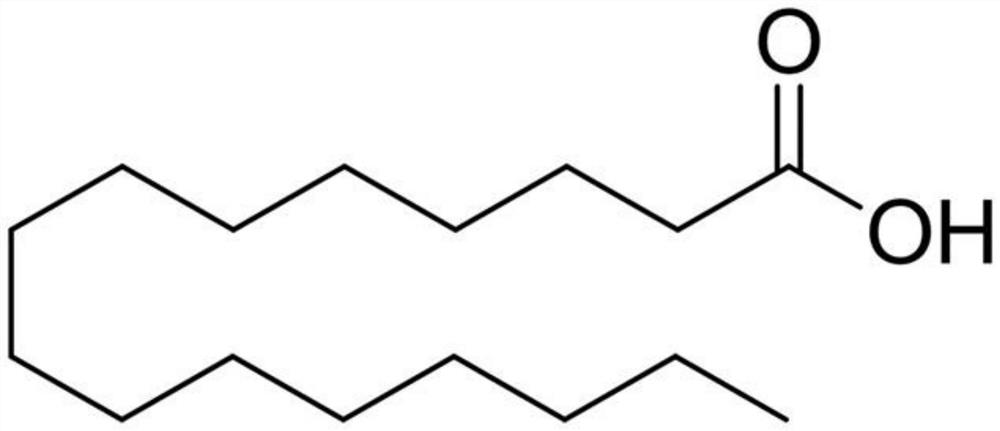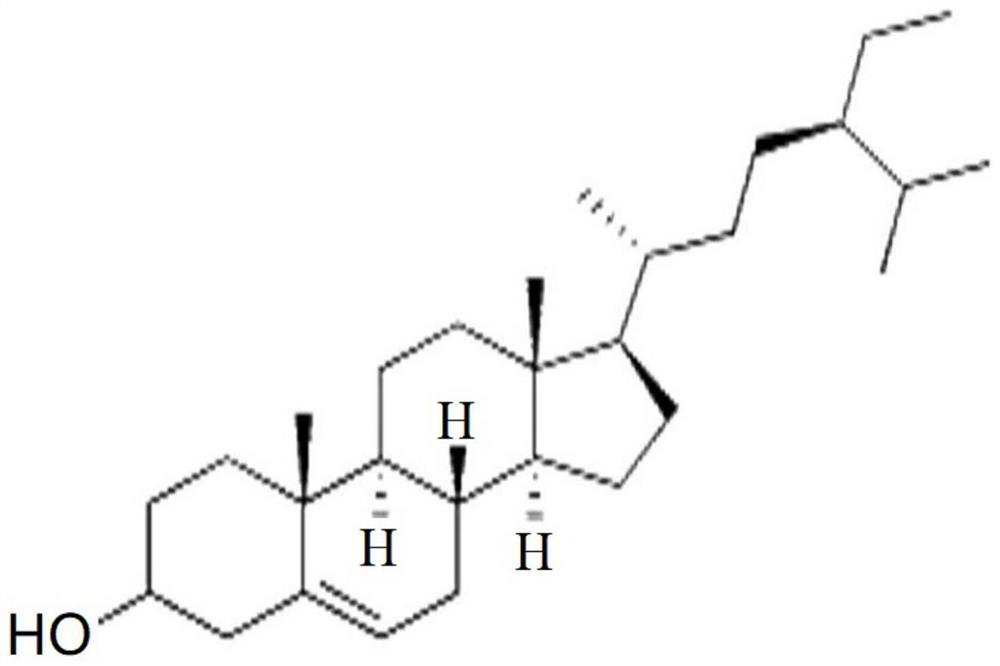A compound for preventing and treating Tetranychus cinnabarinus extracted from branches and leaves of peanuts and its application
A technology of Tetranychus cinnabarinus and peanut branches and leaves, applied in the field of botanical pesticides and agricultural acaricides, to achieve the effects of reducing economic losses, reducing the degree of damage, and avoiding damage
- Summary
- Abstract
- Description
- Claims
- Application Information
AI Technical Summary
Problems solved by technology
Method used
Image
Examples
Embodiment 1
[0038] The active compound extracted from the crude extract of peanut branches and leaves was applied to the control test of Tetranychus cinnabarinus:
[0039] Weigh 20 g of the crude extract of peanut branches and leaves, use silica gel as the stationary phase, and use petroleum ether-ethyl acetate (volume ratio of 1:0-0:1) and ethyl acetate-methanol (volume ratio of 1:0- 0:1), to obtain a variety of crude extracts; using medium pressure column chromatography, using C18 as the stationary phase, mobile phase methanol-water (volume ratio of 1:0-0:1) or chloroform-methanol (volume ratio 1:0-0:1) to separate and purify the crude extract to obtain a purified product; using high performance liquid chromatography, the active compound is determined to be palmitic acid by comparing with a standard. The compound obtained from the above separation and purification was used to carry out the control test on Tetranychus cinnabarinus. The test method was carried out by dipping the stem of t...
Embodiment 2
[0041] The active compound extracted from the crude extract of peanut branches and leaves was applied to the control test of Tetranychus cinnabarinus:
[0042] Weigh 20 g of the crude extract of peanut branches and leaves, use silica gel as the stationary phase, and use petroleum ether-ethyl acetate (volume ratio of 1:0-0:1) and ethyl acetate-methanol (volume ratio of 1:0- 0:1), to obtain a variety of crude extracts; using medium pressure column chromatography, using C18 as the stationary phase, mobile phase methanol-water (volume ratio of 1:0-0:1) or chloroform-methanol (volume ratio 1:0-0:1) to separate and purify the crude extract to obtain a purified product; using high performance liquid chromatography, the active compound is determined to be isovanillic acid by comparing with a standard. The compound obtained from the above separation and purification was used to carry out the control test on Tetranychus cinnabarinus. The test method was carried out by dipping the stem o...
Embodiment 3
[0044] The active compound extracted from the crude extract of peanut branches and leaves was applied to the control test of Tetranychus cinnabarinus:
[0045] Weigh 20 g of the crude extract of peanut branches and leaves, use silica gel as the stationary phase, and use petroleum ether-ethyl acetate (volume ratio of 1:0-0:1) and ethyl acetate-methanol (volume ratio of 1:0- 0:1), to obtain a variety of crude extracts; using medium pressure column chromatography, using C18 as the stationary phase, mobile phase methanol-water (volume ratio of 1:0-0:1) or chloroform-methanol (volume ratio 1:0-0:1) to separate and purify the crude extract to obtain a purified product; the active compound is determined to be β-sitosterol by comparison with a standard by using high performance liquid chromatography. The compound obtained from the above separation and purification was used to carry out the control test on Tetranychus cinnabarinus. The test method was carried out by dipping the stem of...
PUM
 Login to View More
Login to View More Abstract
Description
Claims
Application Information
 Login to View More
Login to View More - R&D
- Intellectual Property
- Life Sciences
- Materials
- Tech Scout
- Unparalleled Data Quality
- Higher Quality Content
- 60% Fewer Hallucinations
Browse by: Latest US Patents, China's latest patents, Technical Efficacy Thesaurus, Application Domain, Technology Topic, Popular Technical Reports.
© 2025 PatSnap. All rights reserved.Legal|Privacy policy|Modern Slavery Act Transparency Statement|Sitemap|About US| Contact US: help@patsnap.com



